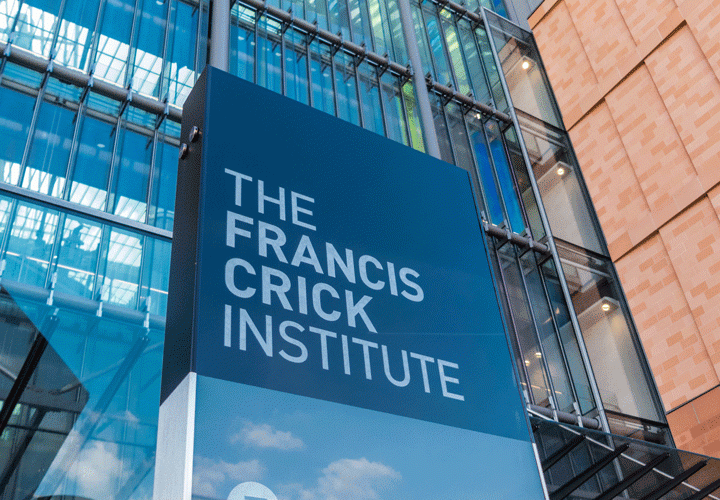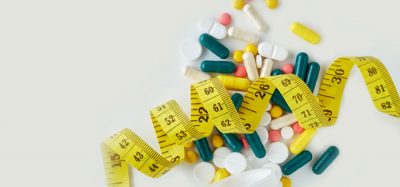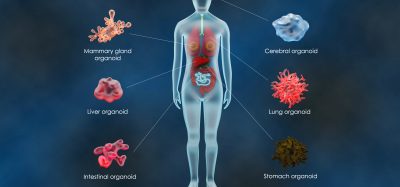The Crick HTS facility – facilitating research through large-scale screening
Posted: 4 June 2020 | Michael Howell (Francis Crick Institute) | No comments yet
The high-throughput screening (HTS) facility at the Francis Crick Institute in the UK provides a core service for Crick research groups. It enables scientists to use large-scale, unbiased screening technologies and approaches as part of their research. Nikki Withers spoke to the Science Technology Platform Head, Michael Howell, to hear more about the services they provide.


What does the HTS facility offer?
The facility is staffed by highly experienced researchers who collaborate closely with Crick research groups throughout a project lifecycle, from developing assays to screening through to final data interpretation and secondary screening. The research groups all have their own particular area of interest; anything from immunology to neurology, parasites to cancer, DNA replication to cell signalling, so we have to be flexible. In addition, we have invested in machinery to help conduct the experiments, such as liquid handling devices, automated microscopes and image analysis software and a database to retain, interrogate and display information.
The net effect of the equipment and the staff is to reduce the barriers for any researcher to adopt this sort of screening technology. There is nothing to fear about a large-scale screening project; conducting the investigation is not an issue. The most important questions at the outset are scientific: why screen in the first place, what information can it yield and how will the data be interpreted and used? If you have ever played the children’s game Guess Who – that is screening. You have an array of possibilities and you ask a question that removes all the things it could not possibly be until you have one option left – the answer. The skill is in asking the right questions or knowing that you are asking an informative question for which there are many other answers, but deducing from this which is the correct one; something that you can verify is the output that you desire.
In this collaborative environment, we try to transform original scientific ideas into viable screening campaigns, a process that benefits greatly from a thorough understanding of the variables influencing the biology under investigation and we can use a variety of techniques to control that variation as the scale increases. Almost inevitably, some compromises must be made in the process but the early and thorough considerations of what the objective of the screen is acts as an invaluable guide.
Biomarkers are redefining how precision therapies are discovered, validated and delivered.
This exclusive expert-led report reveals how leading teams are using biomarker science to drive faster insights, cleaner data and more targeted treatments – from discovery to diagnostics.
Inside the report:
- How leading organisations are reshaping strategy with biomarker-led approaches
- Better tools for real-time decision-making – turning complex data into faster insights
- Global standardisation and assay sensitivity – what it takes to scale across networks
Discover how biomarker science is addressing the biggest hurdles in drug discovery, translational research and precision medicine – access your free copy today
What are your main screening focuses?
“‘High throughput’ is a relative term that should be put into context – a highthroughput screen in an academic setting is just a drop in the ocean compared with what big pharma are capable of doing”
Primarily we use CRISPR and RNAi reagents to dissect biological systems. Where appropriate we also use small molecule-collections of very well‑characterised compounds. Almost all the readouts for these screens will be some form of imaging. Other than that, we are (due to our surroundings) disease, organism and system agnostic. However, a common theme for all these diverse projects is that of creating a good assay. Much of our time is spent identifying the crucial interdependencies of the assay variables and how, or indeed whether, they impact on the biological information that can be inferred from the cellular phenotype observed. Assays that have gone through this process are always robust and reliable. Frequently, we find that assays developed in the facility become standard lab assays thereafter.
In addition to equipment and reagents, the HTS centre provides all researchers with access to the accumulated data from all screens conducted in the facility. Data is held within a central bespoke database that can be interrogated and browsed, enabling researchers to identify novel activities associated with their gene(s) of interest, search the hits from screens relevant to their research and identify colleagues with whom they can collaborate. It is an attempt to facilitate serendipity in research.
Why is screening so important in drug discovery?
There are two general uses of our type of screening in a discovery research setting. When confronted with a novel biological observation, for example an unexpected cell behaviour, a screen can provide a way into the problem identifying some of the molecular processes underlying the phenotype and thereby enabling further dissection of the process. Alternatively, screening can be used as a way of re-evaluating a familiar process from a wider perspective; researchers can take a step back from a problem and look across the landscape of all genes and see what is important to a process. This might, for example, highlight an unexpected and hitherto ignored signalling process as being important in your biological system. Any identification of a novel role for a gene in a biological process could represent the start of a novel drug discovery campaign in the future. However, ‘high throughput’ is a relative term that should be put into context – a high-throughput screen in an academic setting is just a drop in the ocean compared with what big pharma are capable of doing. Here, we use the technology and approaches developed by pharma to do large-scale discovery screens and apply them in an academic setting to better understand the molecular biology of a process; the better we do our job in understanding the biology, the better the targets pharma has to work with to do what they do best.
How has technology and machine learning impacted the way you work?
Putting the hype to one side, machine learning and artificial intelligence (AI) are already having an impact, almost silently slipping into many areas of basic research as common tools of choice. In high‑content screening you might employ various forms of machine learning to assist in cell segmentation and interpreting the very large datasets it can produce. Such new approaches may not always supplant existing approaches but where they enable you to do something you could not do before, you embrace them. However, I am wary of approaches that run along the lines of blindly collecting as much data as possible from lots of screens and feeding it to a magic black box of AI which will spit out the ‘right’ answer for you. Using AI does not mean you have to stop using your own intelligence when interpreting noisy biological data.
What are you most excited about going forward?


There are always trends and fashions in research. When we started out, all our collaborators were working on cancer projects looking for new cancer genes. Now, with the advent of sequencing, most cancer researchers have access to huge databases of sequencing information; they have a list of genes likely to be important in some aspects of cancer biology and do not need to perform genomewide screens to identify relevant genes in functional studies. More recently, we have merged with researchers who are interested in parasites or other disease processes – groups that may not have previously thought of utilising screening before. There are still areas of biology that are untouched by this kind of large-scale discovery research screening, partly because it has been difficult or due to a lack of access to it. Also, there is an increasing appreciation of the intrinsic heterogeneity of cell behaviours in biological systems and the crucial role this plays in both normal and disease states, a realisation that significantly influences how assays are set up in the first place.
There is also a trend, both here and in industry, towards targeted screening. Rather than enormous and costly screening campaigns, researchers are trying to do something a bit smarter and more bespoke. For example, in cancer research this can involve an in-depth analysis of a handful of genes that have come out of sequencing projects, maybe in three-dimensional (3D) models. We all like the idea of doing more of our research and screening in realistic settings, which includes more primary cells, 3D models and/or organoids. However, there are a range of technical difficulties associated with conducting traditional screens in this way. We have to be able to culture, manipulate, stain, image and interpret data in 3D at large scale, for example. To solve these sorts of issues requires a wonderfully exciting inter-disciplinary mess of advances in materials, microscopy, image analysis and discovery researchers generating new technology through unexpected observations (eg, CRISPR). It is this necessary coming together of different disciplines that is really exciting. It may also be that the next generation of screeners have to completely re‑imagine the traditional screening pipeline using more microfluidics or flow-like systems for example.
About the author
In 2007, Michael Howell set up the high-throughput screening facility at the Cancer Research UK London Research Institute. This became the Crick HTS science technology platform in 2016. In addition, he has worked at the Cancer Research UK Clare Hall laboratories and the Ludwig Institute for Cancer Research, studying Poliovirus protein synthesis, cyclins and the cell cycle, and TGFb signalling in disease and early embryo development. He is currently working as part of the Crick Covid Consortium screening pipeline.
Related topics
Analysis, Artificial Intelligence, Assays, Disease Research, Drug Discovery, Drug Targets, Genomics, High-Throughput Screening (HTS), Proteomics, Research & Development, Technology
Related conditions
Cancer, parasite infection
Related organisations
ForteBio, Horizon Discovery, Merck, Ncardia, The Francis Crick Institute








